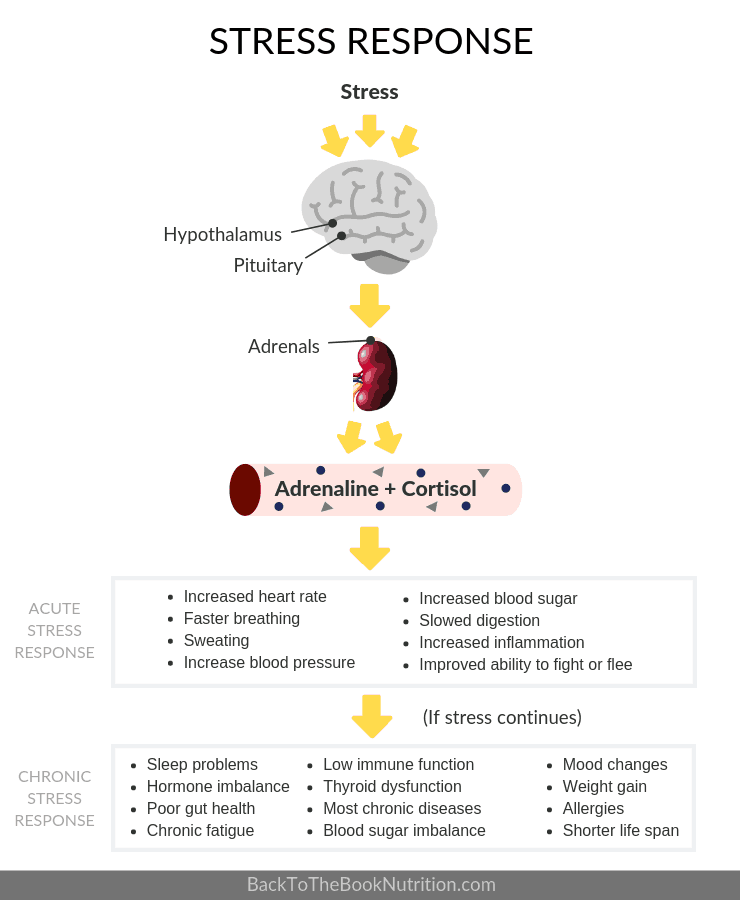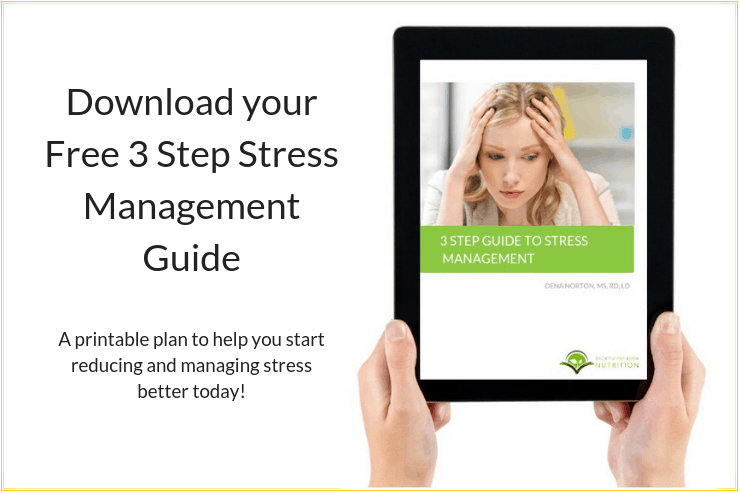We all have stress, and we all know it’s bad for us. But have you ever stopped and taken an inventory of specific stressors in your life and made a practical plan to reduce and manage them? This 3 step guide to stress management has helped so many of my clients and I know it will help you too – download your free printable and get started now!

CLICK HERE TO DOWNLOAD YOUR FREE 3 STEP STRESS MANAGEMENT PLAN!
We all know stress is bad for our health, and we know we need to mange it better. But, in a world where it seems we breathe stress like we breathe air, it’s hard to stop juggling all the things long enough to sit down and list out the specific sources of stress in our lives, and make a practical plan to manage them better. Because, obviously, stopping causes a pile-up of all those stressful things we’re trying to juggle! 😨
But, if there is one area of health where almost all of us need to stop and sharpen the ax, it’s stress management.
I promise it, this practical 3 step plan will pay off in the long run, so let’s get started!
STEP 1: Define “stress”
It’s tempting to jump right to steps 2 and 3, but understanding why we need those steps in the first place provides great motivation for sticking to the plan we create. So let’s begin with a quick overview of exactly how stress is harming our health.
Various stressors are processed by the brain (specifically, the hypothalamus and the pituitary), which then signals the adrenal glands (that sit on top of each kidney) to release adrenaline and cortisol.
Adrenaline can be described as a sprinter – it’s released in the first seconds of the body perceiving a stress. Cortisol is more like a marathon runner, with a more sustained response. If the stress happens frequently enough and/or lasts long enough, cortisol start signaling back to the brain to downgrade other less essential body functions (i.e., reproductive hormones, thyroid hormone, mood, digestion, etc.) in order to continue responding to the stress.
This is the classic “fight or flight” design that has protected us from occasional life threatening situations since the beginning of creation. We rarely encounter life threatening stresses in today’s world, but we’re confronted with smaller forms of stress almost constantly, which keeps our stress response in the “on” position far more than it was intended to be. As a result, many of us are experiencing signs of chronic stress in our physical health – things like hormone imbalance, gut dysfunction, thyroid disease, suppressed immune function, and more.

STEP 2: Identify your personal stressors
Most people can rattle off some of the top sources of stress – work, finances, relationships…But those are just the negative mental/emotional stressors. I still have conversations with friends and clients all the time who are surprised to learn that positive events also create stress on the body, and that physical stressors are just as big of a threat as the mental/emotional ones.
When cataloging your personal stressors, I find it helpful to group sources of stress into the two different “buckets” listed below. As you consider the two lists, you may want to number them in order of those that cause you the most stress down to the least.
Mental/Emotional Stress Bucket
- Grief and loss
- Strained relationships
- Trauma
- Financial worries
- Big life events (weddings, job promotions, new baby, etc.)
- Faster pace of life + lack of margin
- Constant “connectedness” – email, text, social media, etc.
Physical Stress Bucket
- Sleep deprivation (consistently getting less than 7 hours sleep/night)
- Blood sugar imbalance
- Poor gut health (dysbiosis, infections, leaky gut, etc.)
- Modern diet (refined grains, processed oils, added sugars, etc.)
- Excessive exercise
- Inflammation
- Autoimmunity
- Chronic Illness
- Artificial light exposure, especially at night
- Lack of natural light exposure during the day
- Environmental toxins (from food, water, air, and cleaning + personal care products)
- EMFs
STEP 3: Create a stress management plan
This is where the rubber meets the road…and the point where most people get overwhelmed, don’t make a clear-cut plan, and end up sinking back into their old habits a few days or weeks later. That approach is never going to result in lasting change. Creating a structured plan is more concrete and easier to follow, and will help hold you accountable to sticking to your commitments so you get the best results!
List your top three stressors from Step 2, then choose from the stress management practices below, or others that work well for you, and commit to implement those daily or weekly for the next month.
Stress Management Practices:
- Say no to unnecessary commitments
- Sleep 8 hours per night – get my best tips for better sleep here!
- 4-7-8 Breathing before getting out of bed in the morning, when lying down to sleep at night, and any other time you need it during the day
- Daily gratitude journaling
- Schedule phone free time daily
- Spend time outdoors daily – ideally, spend a few minutes outdoors within the first 30 minutes after waking, at other times throughout the day
- Schedule 30 minutes of personal quiet time daily – use this for prayer, quiet reflection, journaling, relaxing in the bath, etc.
- Make a budget and stick to it
- Eat real food and minimize processed foods and sweets
- Switch to nontoxic beauty, personal care, and cleaning products – Download a list of all my favorite natural skin care, make up, and cleaning products here!
- Get counseling
Make notes about what you learn and what results you see throughout the month, then consider repeating the exercise the following month for your next three stressors. Taking the time to do this will start paying off immediately, but the benefits compound over time as you retrain your entire approach to your schedule, relationships, and commitments.



This is a great guide to managing stress! Being stressed is a bad habit and I’m glad you shared these tips with us, thank you!
I think a stress management plan is best. Say out you do not want to be stress and affirm positivity.
Thanks for sharing Kiwi!
This is very helpful. I feel sometimes stressed at home and at work. Thank you for sharing.
I think this article need more attention especially in these days. Covid 19 pandemic interfere every aspect of our life; from the anxiety of our health, reduced income, fear of the future, etc. Stress is the one we should manage to stay healthy. Thanks for sharing
You’re so right, Marya. Thanks for reading.
Very helpful and meaningful blog post…stress is just like our daily partner..but this is the worst of us..well great work though…glad you shared this with us..
My job is super stressful and over the years I found ways to cope with it such as yoga and working out. Great insights, thank you so much.
You are right about positive events being stressors as well. When my oldest son was young, he would end a wonderful day by saying “this is the best day of my life.” Within a few minutes of saying that, he would then completely melt down in tears and unable to process his day, then say, “this is the worst day of my life.” I just remember hugging him through those moments and wishing I knew how to make it easier for him. Fortunately growing up has helped him learn to balance!
Sounds like you’re a good mom. 🙂
This is SO HELPFUL! I struggle with stress and sometimes have a hard time dealing with it. Thank you!
Super interesting. Thanks for sharing such valid info!
Awesome. This was a great read. I will remember these when I’m feeling anxious.
Glad that you enjoyed it Marlynn!